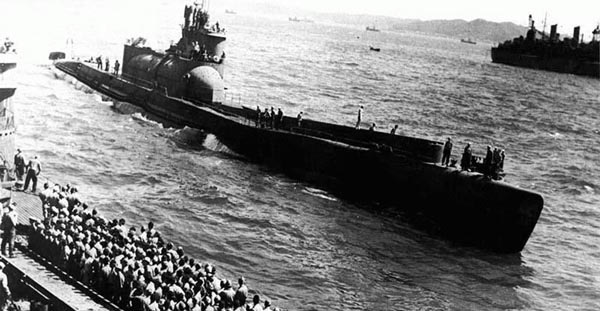I-400-class
Summary
| Origin country | 🇯🇵 Japan |
| Category | Submarine |
| Subtype | Submarine (World War II) |
| Manufacturer | Kure shipyards |
| Year commissioned | 1944 |
| Approx. unit cost | $8.1 million |
Description
The I-400 class submarine, an innovative brainchild of the Imperial Japanese Navy, represents a fusion of aviation and marine technology, primarily designed for long-range attack missions. The conception of these submarines stemmed from the strategic necessity for Japan to shift its focus towards more unconventional warfare methods, following setbacks in the Pacific Theater during World War II. These submarines were envisioned to circumvent traditional maritime defense systems by launching aircraft to carry out bombings on distant targets, including those within the United States mainland, which were previously considered beyond the reach of Japanese forces.
The design of the I-400 class was unprecedented, with its most significant feature being the capacity to carry and launch aircraft. Each submarine could house up to three Aichi M6A Seiran aircraft, specially designed for this purpose. These planes were stored in a hangar built into the submarine's structure, which was cylindrical and waterproof, allowing for the preservation and preparation of the aircraft while submerged. A catapult system facilitated the launch of these aircraft once the submarine surfaced, a process that could be completed within minutes.
In terms of armament, aside from its aircraft, the I-400 class was equipped with eight torpedo tubes and one deck gun, which served as standard offensive capabilities for submarines at the time. However, its true weapon was the ability to strike from a distance with its carried aircraft, which could be armed with bombs or torpedoes, giving it a strategic advantage over conventional submarines.
The operational history of the I-400 class was limited by the circumstances of the time. The end of World War II saw the cessation of their construction and deployment before they could be utilized to their full potential. Several missions were planned, including attacks on the Panama Canal and U.S. naval bases, but these were never executed due to Japan's surrender. Post-war, the submarines were captured by U.S. forces, and their technology was examined to assess their capabilities and the threat they could have posed.
Technical specifications
| I-400 | |
|---|---|
| Displacement | 5223 tons |
| Displacement submerged | 6560 tons |
| Range | 69000 km at 14 knots |
| Crew | 144 members |
| Width | 12.0 m (39.4 ft) |
| Length | 122.0 m (400.3 ft) |
| Max. depth | 100 m (328.1 ft) |
| Propulsion | 4 diesel engines with a power of 7,700 hp and 2 electric motors with a power of 2,400 hp - 2 propellers |
| Armament | 8 533mm TLTs (fore) + 1 140mm gun + 4 25mm AA guns |
| Maximum speed | 19 knots |
| Max. speed submerged | 7 knots |
Photo of I-400 class
